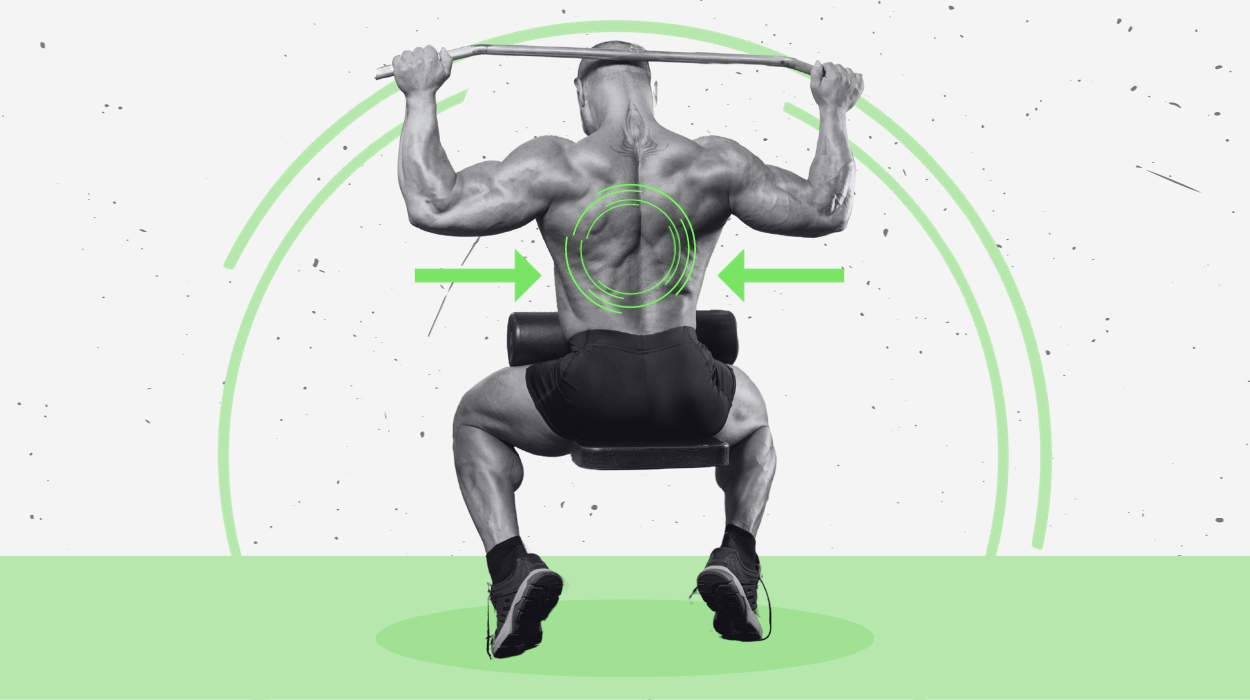
When it comes to maintaining a strong and healthy body, we often focus on the usual suspects like the chest or abs. However, there is one crucial area that tends to be overlooked: the mid-back. Neglecting the middle back muscles can lead to poor posture, muscle imbalances, and even chronic pain.
Did you know that the mid-back muscles play a vital role in supporting our spine[1] and maintaining proper posture? They act as a sturdy foundation for our upper body, facilitating movements and ensuring stability. Unfortunately, modern lifestyles, long hours at desks, and hunching over electronic devices have taken a toll on our mid-back health.
In this article, we will discuss middle back exercises, their benefits, and a series of exercises to strengthen and tone your mid-back muscles. Get ready to discover a path to improved strength, postural balance, and overall well-being.
Best Mid-Back Exercises
There is a wide variety of viable choices when it comes to effective middle-back workouts. Two examples of these are:
Stretching exercises are also an excellent addition to the mid-back strengthening routine, such as:
Five Best Middle Back Exercises For Your Workout
Several ways are strengthening your mid-back may help your health and fitness. You can improve your posture, athletic ability, and even lower back discomfort by simply implementing these exercises into your regular workout program.
Bent-Over Barbell Row
The bent-over barbell row is an effective exercise that can help you burn calories daily, which can aid weight loss over time. It is primarily targeted at the mid-back muscles, specifically the rhomboids, latissimus dorsi, and rear deltoids.
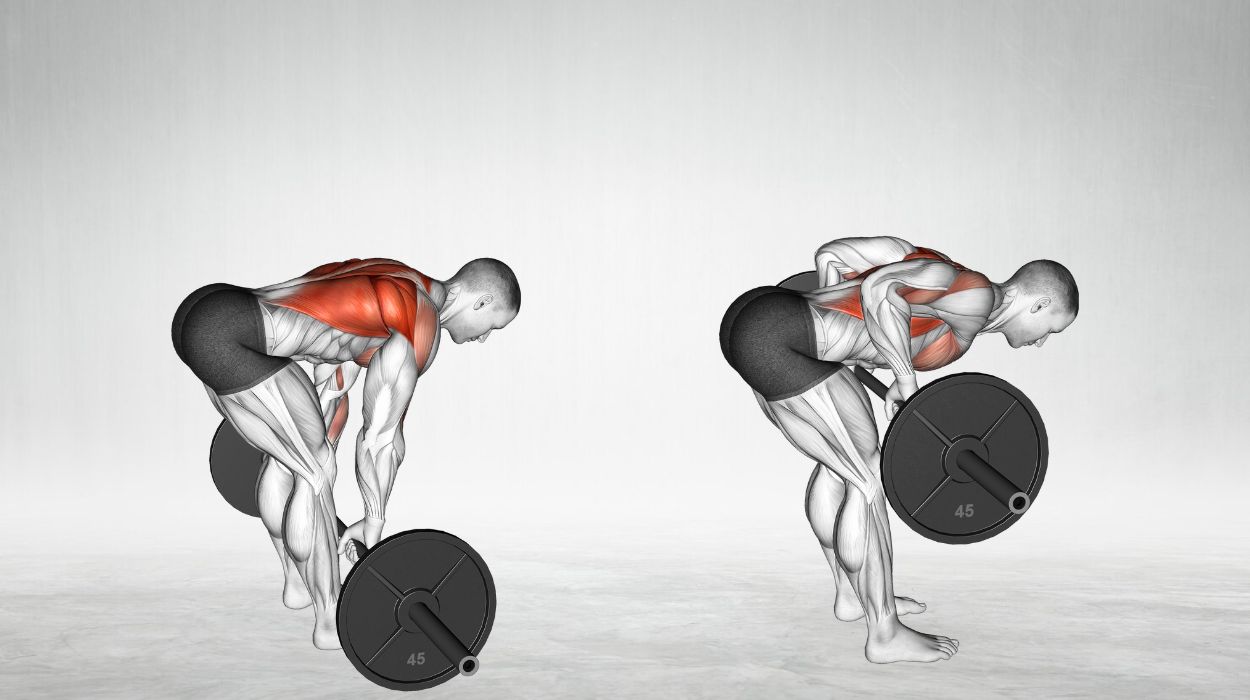
How to do:
- Stand with feet shoulder-width apart and knees slightly bent.
- Hold a barbell with an overhand grip.
- Hinge at the hips, keeping the back straight and core engaged.
- Lower the torso until your upper body is parallel to the floor.
- Pull the barbell towards the abdomen by retracting the shoulder blades.
- Squeeze the mid-back muscles and hold for a brief pause at the top.
- Slowly lower the weight back to the starting position.
Tips:
- Keep your back straight and avoid rounding or arching it, as this helps prevent injury and ensures effective engagement of back muscles.
- Pull the barbell towards your lower chest, keeping your elbows close to your body to better target the lats and mid-back muscles.
- Lift and lower the barbell in a controlled manner, focusing on using your back muscles rather than momentum, to maximize effectiveness and reduce the risk of injury.
Optimal Sets And Reps: 3-4 sets of 10-12 reps
Cable Face Pull
This is another effective exercise that aims for the mid-back muscles and muscles of the upper back and shoulders. It does not specifically target side fat or deliver a flat stomach, but it can help with building your metabolic rate.
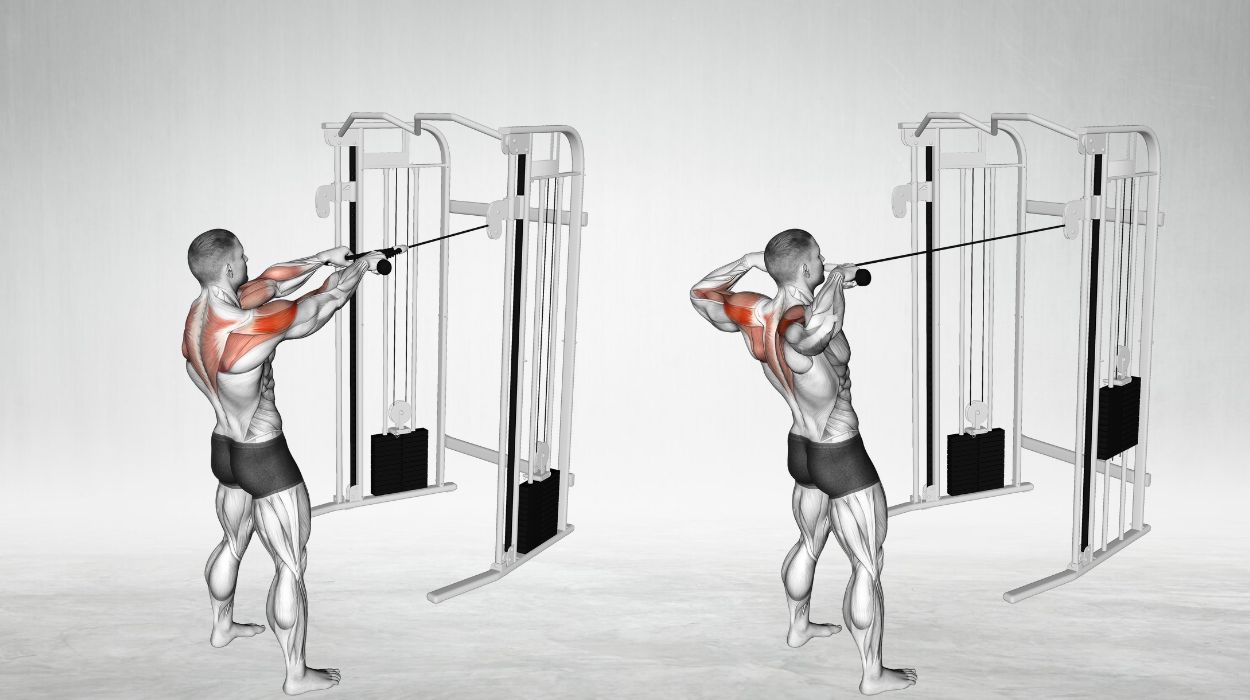
How to do:
- Set up a cable machine so that the handle or rope hangs just below the chest.
- Keep your feet hip-width apart and your knees slightly bent as you face the machine.
- Use an overhand grasp to grab the rope.
- Take a few steps back to tighten the cord.
- Keep elbows slightly above shoulder level and arms extended.
- Pull the cable towards the chest, bringing the shoulder blades together and the rope close to the face.
- Contract your mid-back muscles and pause at the top of the workout.
- Slowly return to the starting position.
Tips:
- Stand with feet shoulder-width apart facing the cable machine, grip the rope with hands slightly wider than shoulder-width, and keep your elbows high throughout the movement
- Pull the rope towards your face, aiming to get your hands beside your ears, and squeeze your shoulder blades together at the end of the movement for optimal muscle engagement.
- Focus on a controlled, steady tempo; pull the rope smoothly and return to the starting position with the same control, avoiding any jerky motions.
Optimal Sets And Reps: 3-4 sets of 12-15 reps
T-Bar Row
The T-Bar Row is a powerful exercise that targets the mid-back muscles, providing a challenging workout. The steps involved are:
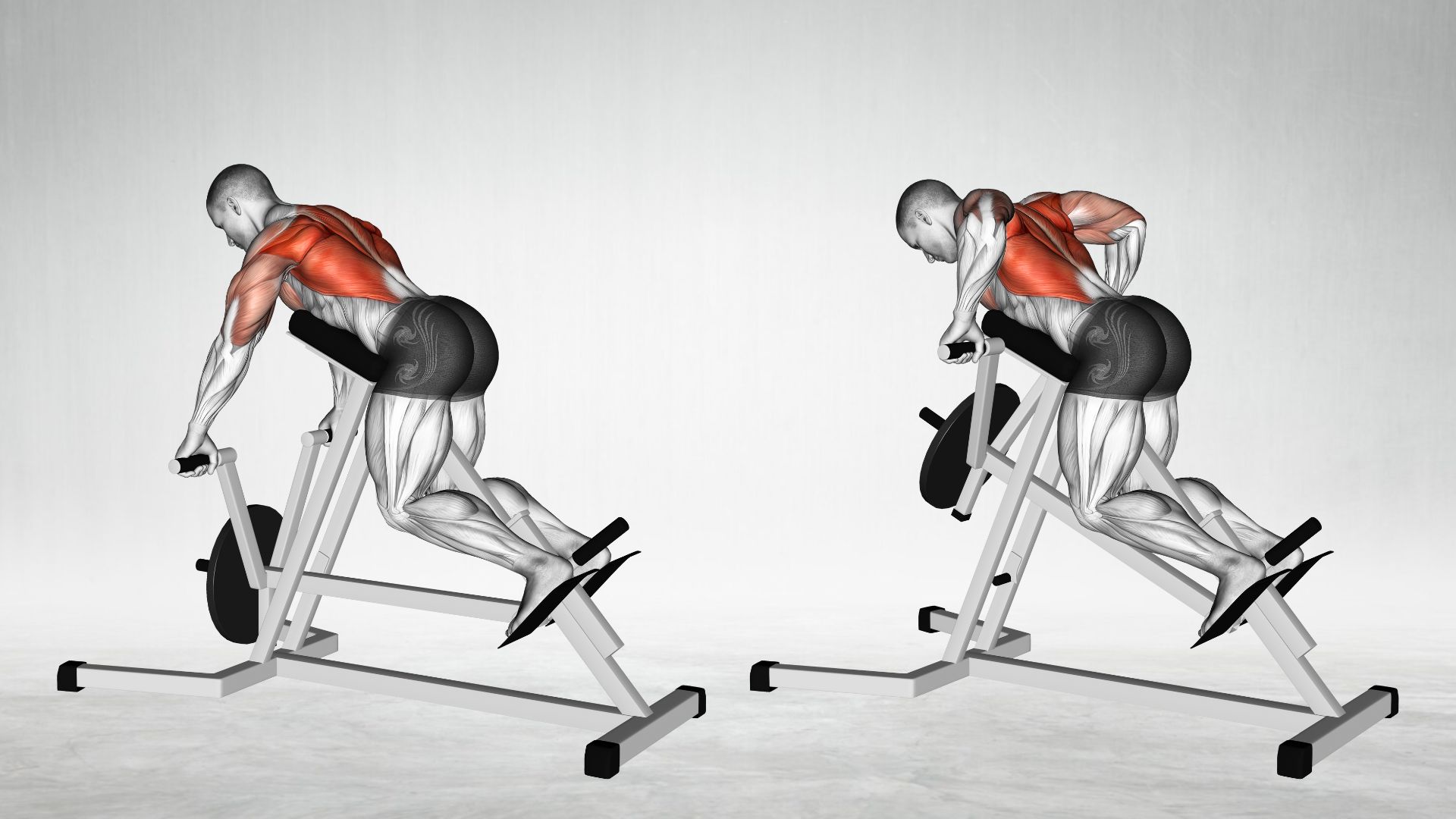
How to do:
- Position a barbell between two heavy objects or in a landmine attachment. A landmine attachment is a piece of equipment that has a pivot point. It allows a barbell to be inserted at one end while the other is positioned on the ground.
- Stand over the bar with feet shoulder-width apart, slightly bending the knees.
- Lean forward, maintaining a flat back and grabbing the handles or the bar.
- Engage the core and pull the bar towards your abdomen by retracting the shoulder blades.
- Squeeze the mid back muscles at the top of the movement, holding for a brief pause.
- Lower the weight back down, maintaining control and keeping the back straight throughout
Tips:
- Keep your back straight, chest up, and core engaged to prevent injury and maximize muscle engagement during the T-bar row.
- Make sure to fully extend your arms at the bottom of the movement and squeeze your shoulder blades together at the top to target your upper back effectively.
- Start with a weight that allows you to perform 3 sets of 10-12 reps with good form. As you progress, gradually increase the weight to challenge your muscles and promote growth.
Optimal Sets And Reps: 3 sets of 10-12 reps
Unilateral Band Row
The unilateral band row is an excellent way to improve unilateral strength and stability by focusing on the muscles in the middle of the back.
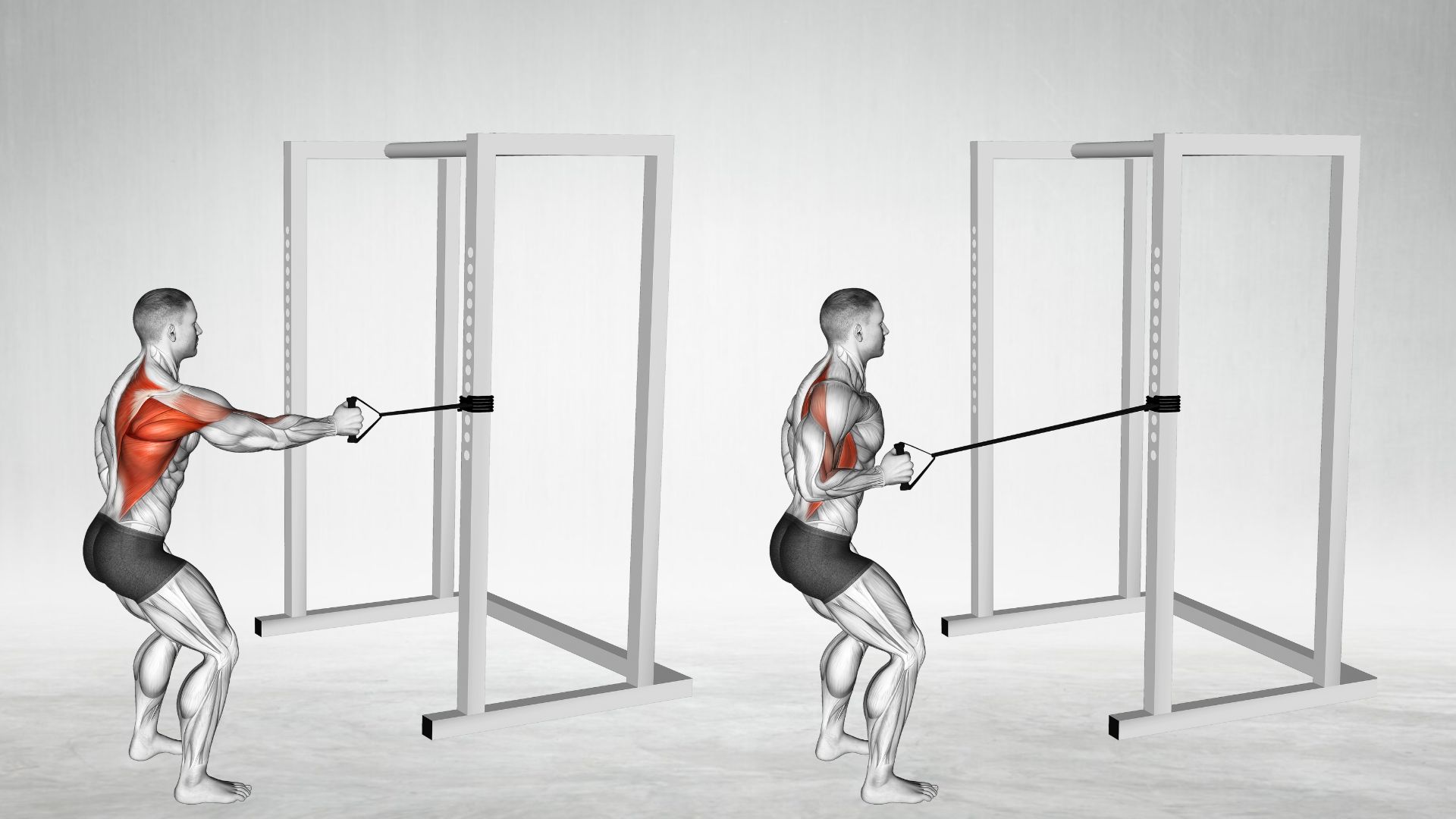
How to do:
- Face the anchor point, which is where you attach the resistance band, with your feet shoulder-width apart, in a straight line, and knees slightly bent.
- Grasp the resistance band handle with one hand, keeping the arm extended.
- Step back to tense the band.
- Lean away from the anchor point.
- Keep your back straight and core engaged.
- Pulling in the direction opposite to the band’s resistance, retract the shoulder blade and pull your elbow backward.
- Pause during maximal contraction, then return slowly to the starting position.
- Switch arms and repeat the exercise.
Tips:
- Ensure your feet are hip-width apart and your core is engaged to provide a strong and balanced base for the exercise.
- When pulling the band, emphasize squeezing your shoulder blades together to target your upper back muscles effectively.
- Use a band with appropriate resistance to allow you to complete 3 sets of 10-12 reps with good form, gradually increasing resistance as you become stronger.
Optimal Sets And Reps: 3 sets of 10-12 reps
Prone Cobra
The Prone Cobra[2] exercise is a great way to strengthen the mid-back muscles and improve posture. Here’s how to do it:
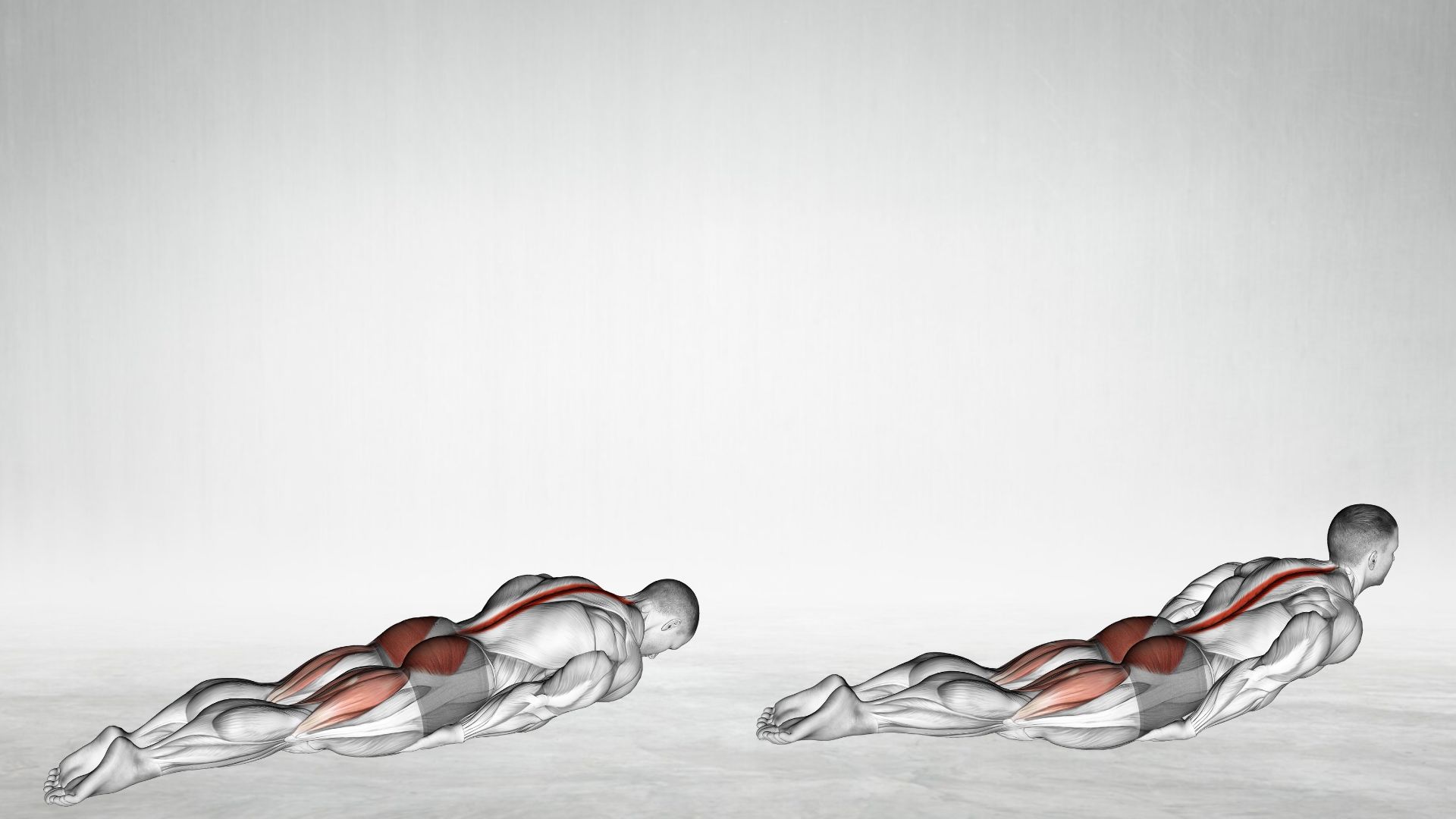
How to do:
- Lie face down on a mat with your arms by your sides and your legs extended.
- Engage your back and lift your chest off the ground while keeping your chin tucked.
- Squeeze your mid-back muscles and hold the position for a moment.
- Lower your chest back down to the starting position while maintaining control.
Tips:
- Keep your neck in line with your spine, and avoid looking up to protect your neck and focus on your upper back muscles.
- When lifting your chest, focus on squeezing your shoulder blades together to engage your upper back muscles effectively.
- Slowly raise and lower your chest, emphasizing the contraction and squeeze at the top of each repetition.
Optimal Sets And Reps: 3 sets of 12-15 reps
Three Best Mid-Back Stretches
Mid-back stretches are exercise routines that can help you get rid of pain and inconvenience in the back. Some of them are:
Seated Twist
The Seated Twist[3] is a seated stretching exercise that helps enhance spinal mobility and relieve tension in the lower back and hips. By gently twisting your torso, this exercise promotes flexibility and can be a valuable addition to your routine for improving core and back muscle flexibility.
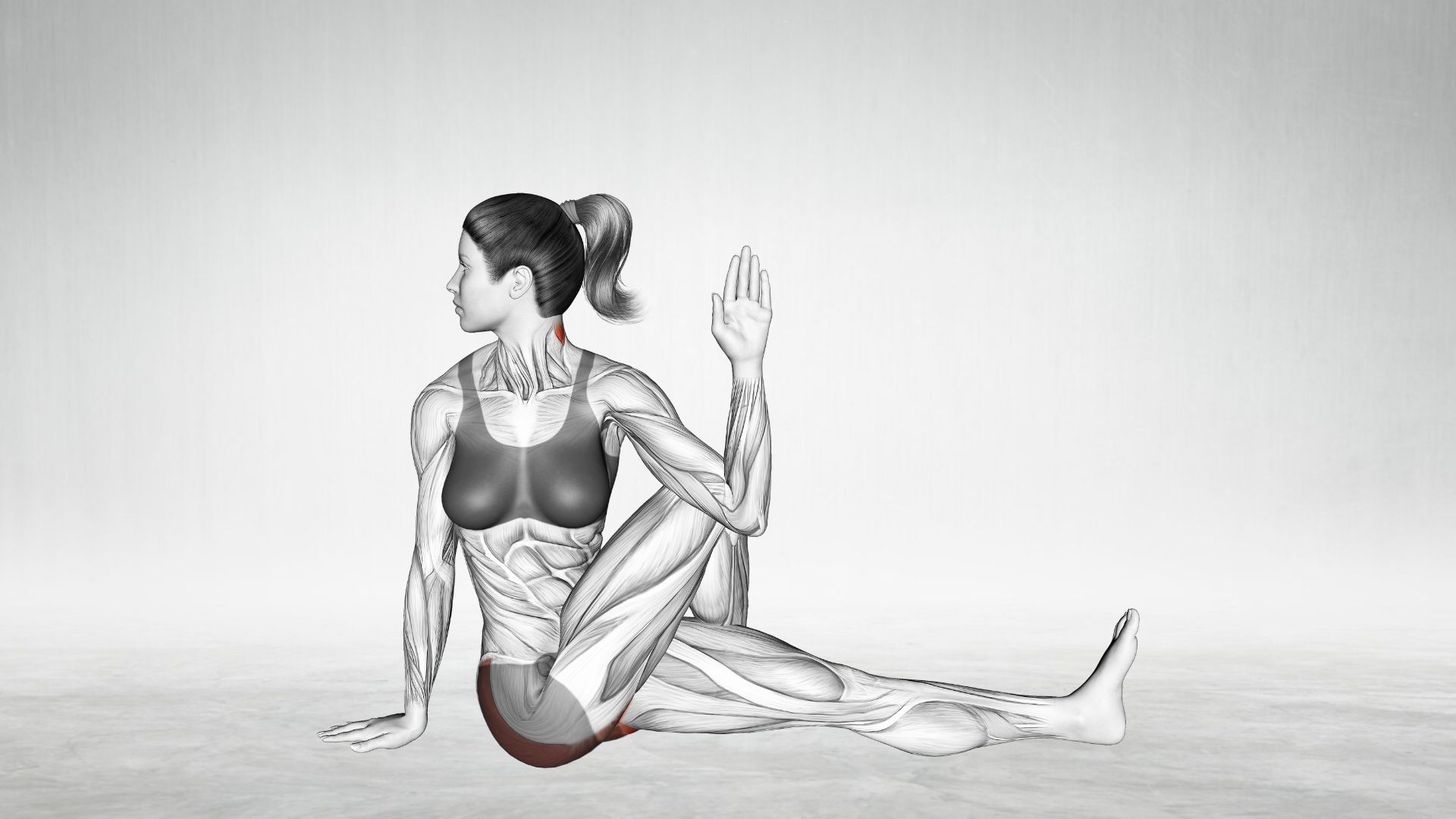
How to do:
- Sit on the floor with your legs extended straight.
- Cross your right leg over your left leg, placing your right foot on the outside of your left knee.
- Position your left hand on your right knee.
- Gently twist your torso to the right, using your left hand for leverage.
- Keep your back straight and hold the stretch for 20-30 seconds.
- Repeat the stretch on the other side.
Tips:
- Maintain a slight engagement of your core muscles to support your spine and deepen the twist without straining.
- Inhale deeply to prepare, and exhale as you gently twist further, allowing your breath to help you relax into the stretch.
- Over time, aim to twist a little further with each repetition to improve flexibility in your spine and hips.
Optimal Sets And Reps: 2-3 sets on each side, holding the stretch for 20-30 seconds per side.
Cobra Pose
The Cobra Pose is a yoga-inspired exercise that targets the muscles of your back, chest, and core. Lifting your chest off the ground while keeping your lower body grounded, promotes spinal flexibility and strengthens the muscles along your spine and lower back.
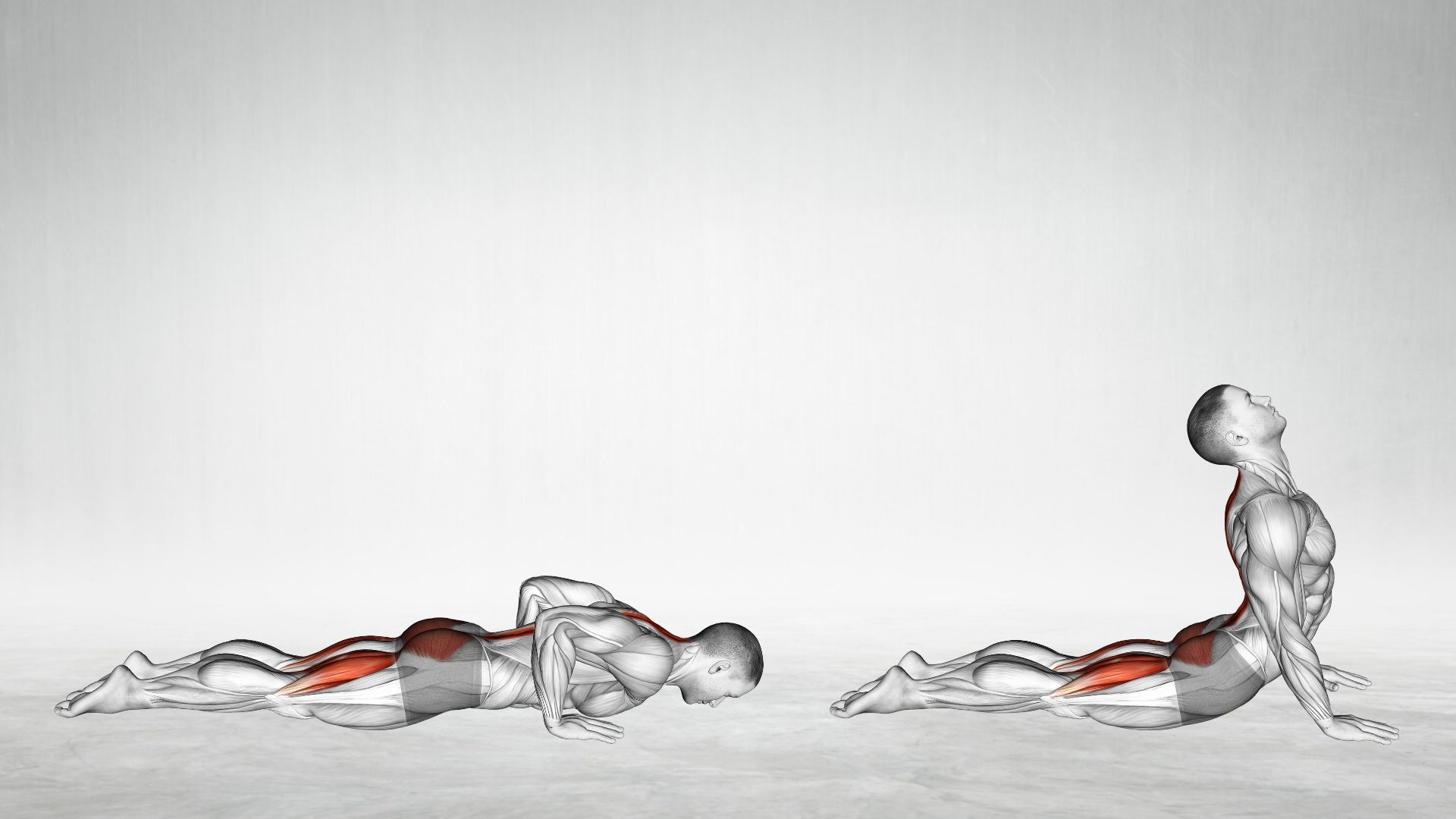
How to do:
- Begin by lying on your stomach with your legs extended and your palms flat on the floor next to your shoulders.
- Press the tops of your feet into the mat and engage your core muscles.
- Inhale deeply, and as you exhale, press through your hands to lift your chest off the ground, while keeping your hips and legs on the mat.
- Gently arch your back, drawing your shoulder blades down and back to open your mid-back.
- Hold the pose for 20-30 seconds, all while maintaining steady breath control.
Tips:
- Ensure your hips and thighs remain in contact with the mat throughout the pose, emphasizing the stretch in your spine and lower back.
- To protect your lower back, engage your glute muscles slightly to support the lift of your chest and maintain proper alignment.
- Over time, aim to deepen the arch in your back as you become more flexible, but always prioritize a pain-free range of motion.
Optimal Sets And Reps: 2-3 sets, holding each set for 20-30 seconds
Bridge Pose
The Bridge Pose is a yoga exercise that involves lifting your hips off the ground while lying on your back, creating a bridge-like shape with your body. This pose is excellent for strengthening the glutes, lower back, and core muscles, while also promoting flexibility in the spine and hip flexors.
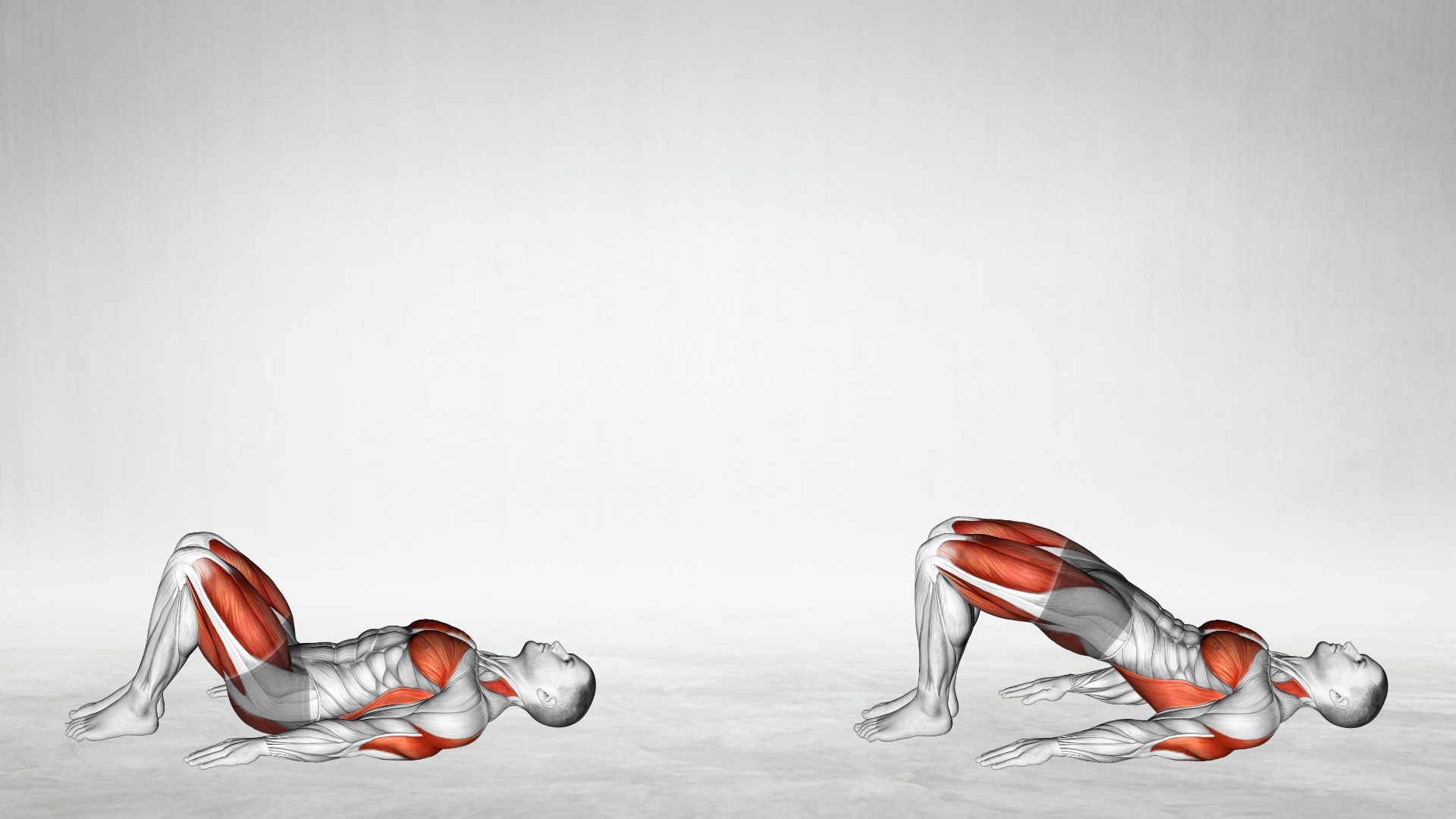
How to do:
- Start by lying on your back with your knees bent and feet flat on the floor, hip-width apart.
- Place your arms alongside your body, palms facing down.
- Press through your feet, engage your glutes, and lift your hips off the ground, creating a bridge shape with your body.
- Draw your shoulder blades together underneath you, feeling a gentle stretch in your mid-back.
- Hold the pose for 20-30 seconds while maintaining controlled breathing.
- Slowly lower your hips back down to the floor.
Tips:
- Keep your core muscles engaged throughout the pose to support your lower back and maintain stability.
- Focus on pushing through your feet to lift your hips, avoiding excess strain on your lower back.
- Keep your neck in a comfortable, neutral position to prevent unnecessary tension in your neck and upper body.
Optimal Sets And Reps: 2-3 sets, holding each set for 20-30 seconds.
Benefits Of Middle Back Exercises
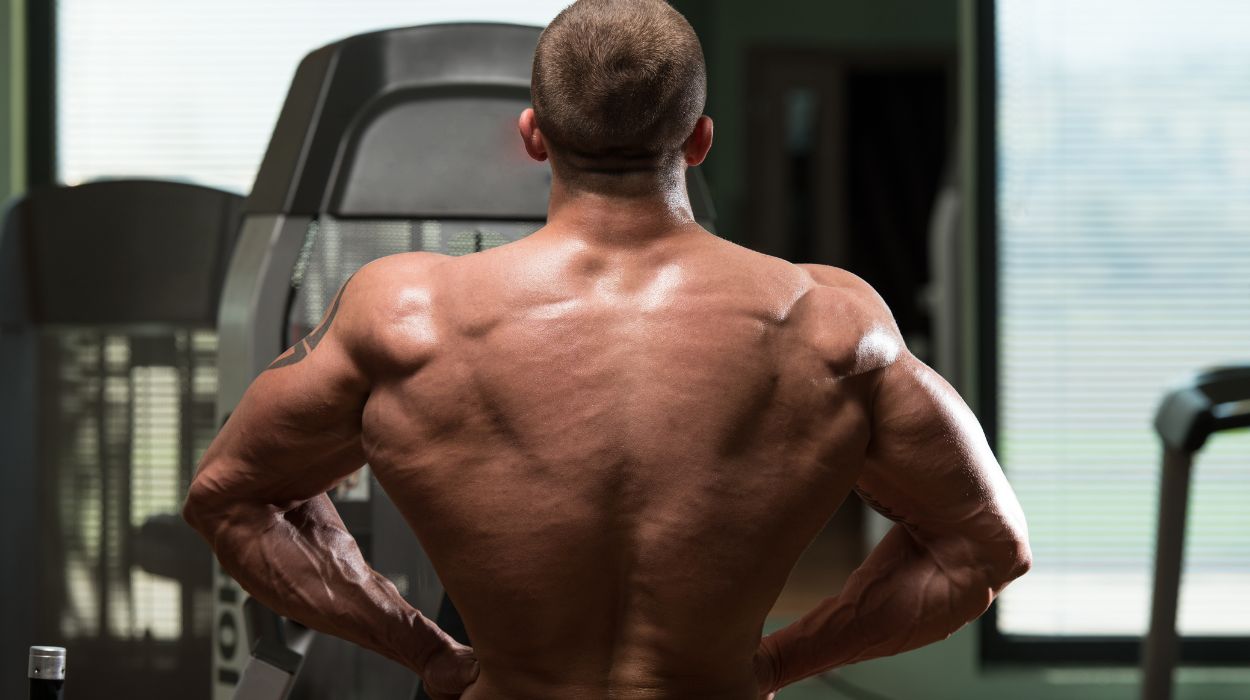
Middle-back exercises offer numerous benefits that contribute to overall physical well-being. Following are some of the key benefits they provide.
Improved Posture
Middle back exercises target the muscles responsible for maintaining proper spinal alignment, which can help correct rounded shoulders and slouching. Strengthening these muscles improves posture and minimizes postural abnormalities and pain.
Increased Upper Body Strength
The mid-back muscles, including the rhomboids,[4] trapezius, and posterior deltoids, play a crucial role in various upper body movements. Regular middle back exercises like the chest-supported row, can lead to improved strength in these muscles, allowing for better performance in activities like lifting, pulling, and pushing.
Incorporating middle back exercises like the bent-over barbell row into your chest workout routine can help you achieve a more balanced upper body. By targeting the middle back muscles, you ensure that they receive adequate attention achieving proper development.
Reduced Neck And Shoulder Tension
Weak mid-back muscles can result in overcompensation by the neck and shoulder muscles, leading to tension and discomfort in these areas. Strengthening the mid-back can help alleviate such tension and promote a more balanced distribution of workload among the upper body muscles and can contribute to better muscle mass development.
Improved Athletic Performance
Whether participating in sports, weightlifting, or other physical activities, a strong mid-back contributes to better overall performance. It enhances functional movements, facilitates proper technique, and increases power transfer between the upper and lower body.
Alleviation Of Back Pain
Strengthening the mid-back muscles through exercises including the inverted row can help alleviate back pain. This is especially true in individuals who experience discomfort due to poor posture or muscle imbalances. Improved muscle strength and endura
Conclusion
Our mid-backs are functionally important, yet generally neglected in workout programs. This may result in poor posture, poor mind-muscle connection, muscular imbalances, and persistent discomfort. Targeting mid-back movements in our workouts has several advantages. Mid-back strength improves posture, upper body strength, neck and shoulder stress, athletic performance, and back discomfort.
Some exercises that target the mid-back include the bent-over barbell row, cable face pull, unilateral band row, and T-bar row. Middle back stretches like the seated twist, cobra pose, and bridge pose relieve stress and enhance mobility.
These exercises and stretches help us build a stronger, healthier, and more balanced body by training the mid-back muscles.
Frequently Asked Questions
Some common mid-back exercises include bent-over rows, cable face-pulls, reverse flyes, lat pulldowns, and Superman poses.
It is recommended to perform mid-back exercises two to three times per week to allow for adequate muscle recovery and growth.
Yes, several mid-back exercises can be performed at home without equipment, such as the bodyweight row, bird dog, and cobra pose.
Strengthening the mid-back muscles can help alleviate back pain by improving posture, reducing muscle imbalances, and providing better support to the spine.
Yes, beginners can start incorporating mid-back exercises into their fitness routine, but it’s important to start with proper form and lighter weights or use resistance bands and work your way up gradually over time.
Resources
- Gordon, R. and Cotton, D. (2016). A Systematic Review of the Effects of Exercise and Physical Activity on Non-Specific Chronic Low Back Pain. Healthcare, [online] 4(2), pp.22–22. doi:https://doi.org/10.3390/healthcare4020022.
- Park, S.-H. and Lee, M.-M. (2020). Effects of Lower Trapezius Strengthening Exercises on Pain, Dysfunction, Posture Alignment, Muscle Thickness and Contraction Rate in Patients with Neck Pain; Randomized Controlled Trial. Medical Science Monitor, [online] 26. doi:https://doi.org/10.12659/msm.920208.
- Vinstrup, J., Sundstrup, E., Brandt, M., Markus Due Jakobsen, Calatayud, J. and Andersen, L.L. (2015). Core Muscle Activity, Exercise Preference, and Perceived Exertion during Core Exercise with Elastic Resistance versus Machine. Scientifica, [online] 2015, pp.1–6. doi:https://doi.org/10.1155/2015/403068.
- Farrell C;Kiel J (2023). Anatomy, Back, Rhomboid Muscles. [online] Available at: https://pubmed.ncbi.nlm.nih.gov/30521277/




